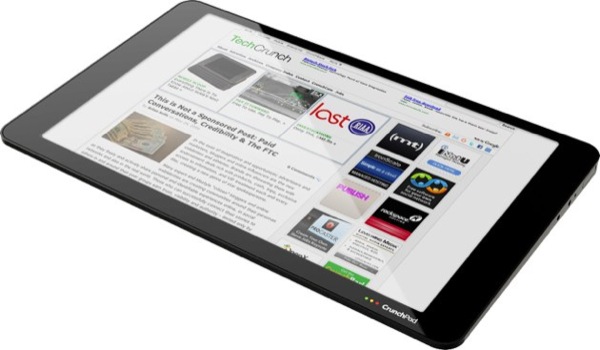So how do we get out of this place?

Let’s face it. Mike Arrington’s problem with the iPhone, Om Malik’s problem with AT&T, the FCC’s problem with Apple + AT&T together, my own problems with Cox, Dish Network and Sprint, David Pogue’s problem with the whole freaking cell phone industry … all of these are a great big WAAAH! in the wilderness of industrial oblivity to what customers want. We’re in the graveyard of what Umair Haque calls the zombieconomy. We’re living in Night of the Living Dead and complaining that the zombies want to eat us alive.
What they really want is to strap us down while they bleed us for small change—tiny amounts of ARPU. They do this, for example, by forcing us to sit through “The … number … you … have … dialed … eight … zero … five … seven …” until a small ka-ching happens somewhere deep in their billing system, so you get bled whether or not you’ve left (or received) a message. David Pogue:
Is 15 seconds here and there that big a deal? Well, Verizon has 70 million customers. If each customer leaves one message and checks voicemail once a day, Verizon rakes in — are you sitting down? — $850 million a year. That’s right: $850 million, just from making us sit through those 15-second airtime-eating instructions.
It was JP Rangaswami (disclosure: I consult JP and his company, BT) who first pointed out to me that the primary competence of phone companies isn’t technical. It’s financial. They’re billing machines. That’s their core competency. And it was r0ml who pointed out, way back when he was with AT&T Wireless (before it became Cingular, and then the AT&T we all know and hate today), that phone companies arrived at the holy grail of micropayments decades ago. They don’t charge small amounts, but they know how to add them up, and round piles of microminutes into billions of dollars.
A better movie metaphor is The Matrix. We’re all wet cell batteries inside giant phone company billing systems. The machines took over a long time ago, and they’re still running the world.
Not that acting like machines does them much good in the long run. Umair Haque:
Profit through economic harm to others results in what I’ve termed “thin value.” Thin value is an economic illusion: profit that is economically meaningless, because it leaves others worse off, or, at best, no one better off. When you have to spend an extra 30 seconds for no reason, mobile operators win — but you lose time, money, and productivity. Mobile networks’ marginal profits are simply counterbalanced by your marginal losses. That marginal profit doesn’t reflect, often, the creation of authentic, meaningful value.
He adds,
The fundamental challenge for 21st Century businesses — and economies — is learning to create thick value. We’re seeing the endgame of a global economy built to create thin value: collapse. Why? Simple: thin value is a mirage — and like all mirages, it ultimately evaporates. In the 21st Century, we’ve got to reconceive value creation.
Constructive Capitalists are disrupting their rivals by creating thicker value. Thick value is sustainable, meaningful value — and a new generation of radical innovators is wielding it like a strategic superweapon.
Rick Segal thinks Mike Arrington‘s CrunchPad is one of those superweapons. Here’s what the Crunchies say will look like:
Sez Rick,
No, this probably isn’t the next Apple or Motion Computing, but here’s the secret.
Let’s assume there are just 1000 people out of all the TechCrunch people in the world that want this device. If this device gets made and sold to 1000 happy people and the result is a manufacturing world and process which can now do these “one off” type devices, the game changes.
That’s why I want this device to get made. It begins a high profile (and positive) disruption at the point of manufacture and that can mean exciting things to you.
One way to blow up silos and walled gardens is de-verticalize industry itself. Not by making it horizontal (that’s too abstract), but by making it personal. Rick’s angle here is to go all the way to the source, and make manufacturing personal.
That’s what Rick thinks Mike & Co. are doing here. I also think the Crunchpad is compliant with what Dave says in this post here:
I’ve been through this loop many times, this is Mike’s first. The only platform that really works is a platform with no platform vendor, and that’s the Internet.
Right. The Crunchpad, as I understand it (and the Crunchies have explained it) is a Net-native device. Standards-based. Commodity parts. Full of open source stuff. The platform is the Net. The vendor is TechCrunch, but trapping users isn’t their game. They’d rather have thick value than thin.
So how do we contribute, besides paying cash for goods? By being constructive customers, rather than passive consumers. That’s what Rick is calling for here, and why we, as free and independent customers, can choose to support something that uses the Net as the platform, and is built to be user-driven.
Think about it. Is the Crunchpad crippled by any deals with a major vendor of any kind? Is it locked into any phone company’s billing and application approval systems? Is it locked into any one industry’s Business-as-Usual? No.
So who is in the best position to contribute to its continued improvement, besides the Crunchies themselves?
You. Me. Users. Customers.
We can drive this thing. Even if what Dan Frommer says is right, and Apple comes out with the world’s most beautiful pad ever, and pwns the whole category, there’s more vroom for improvement in the Crunchpad, because Apple’s device will be closed and the Crunchpad will be open. Or should be.
You listening, Mike?

